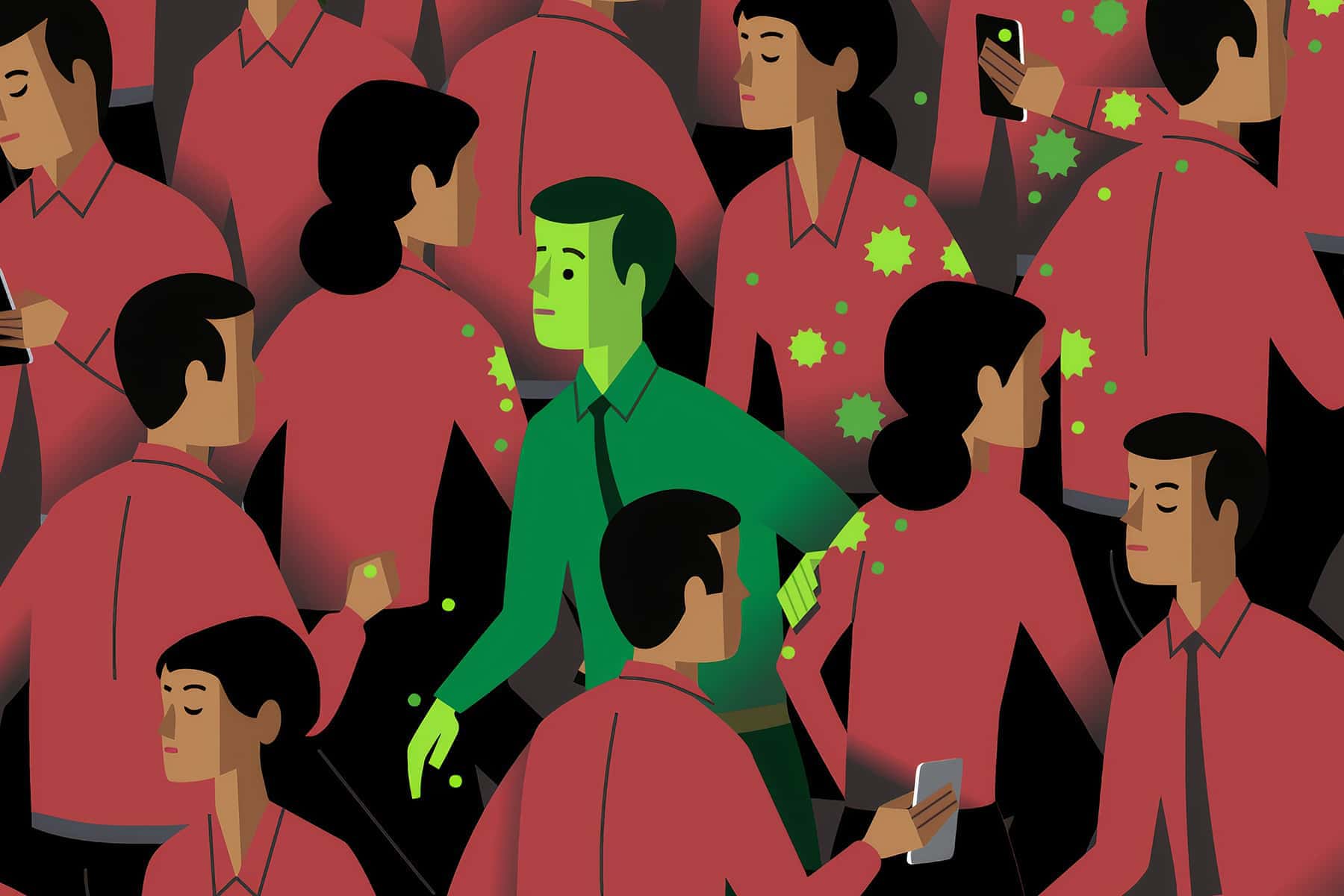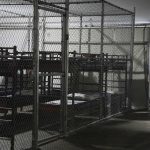
The spread of COVID-19 in Wisconsin continues to get worse, Governor Tony Evers and state health officials warned recently — and unless more people take it seriously, an increased number of residents, families, and members of the community may die from the virus in the coming weeks and months.
“We are in a crisis,” said Dr. Ryan Westergaard, chief medical officer of the Bureau of Communicable Diseases in the state Department of Health Services (DHS). “And if we do nothing differently, I would say it’s a high likelihood that this is going to get much worse before it gets better.”
Without concerted, widespread action to change behavior and reduce the risk of exposure, he added, “I fear case numbers and death numbers are going to get higher.”
The COVID-19 death toll reached 1,300 people on September 29, an increase of 17 over the day before, said Andrea Palm, DHS secretary-designee, at an online media briefing with Evers and Westergaard.
“These people we have lost are our friends, our neighbors, family members and co-workers,” said Palm. “We’ve lost too many during this pandemic. And as we see a significant surge here in Wisconsin, we must take action to change course.”
September 29 marked the eighth day out of the last 14 in which the number of new confirmed cases exceeded 2,000, including the record 2,817 new cases that DHS reported on September 26. The total number of people who have tested positive for a COVID-19 infection in Wisconsin has reached 119,955.
After several weeks in which the skyrocketing rate of positive COVID-19 tests were largely concentrated in the 18 to 24-year-old age group, related to the resumption of on-campus classes at colleges and universities around the state, that age group’s case rate has been going down.
“Other age groups have not, and we continue to see an overall increase in our cases,” Palm said.
The seven-day average of new cases has more than tripled in a month. It stood at 2,255; a month ago, it was 684.
Strain on hospitals
“Our healthcare system is feeling the strain,” Palm said. Staffing shortages are cropping up as some healthcare workers are entering quarantine after being exposed to COVID-19 patients.
“All of our regions are showing increased hospitalizations,” Westergaard said. “The more severe cases are on the rise.”
Hospital use for COVID-19 patients is at a record high since the start of the pandemic in every region of the state except southeastern Wisconsin, according to data collected by DHS.
Palm and Evers spoke with hospital officials in northeastern Wisconsin, “and they are, not surprisingly, increasingly concerned about their hospital capacity and their ability to treat people with COVID — and non-COVID [patients],” Palm said.
DHS is resuming temporary measures that expand Medicaid reimbursement for treatments outside hospitals to help relieve the burden on inpatient facilities — initiatives that the agency undertook earlier in the pandemic. The state is “closer…than we ever have been” to needing to use an alternate field hospital facility at State Fair Park in Milwaukee to accommodate an overflow of patients — “the scenario we hope we never get to,” she added. Using the space requires four to seven days’ notice.
One potentially bright spot is the prospect of 2 million fast antigen tests that Palm said Wisconsin expects to receive from a 250-million-test supply the federal government is shipping to the states. Westergaard said they would probably be used in outbreak situations, where the antigen test’s rapid turnaround time will be especially helpful.
Even as public health practitioners try to understand more about what has driven the latest increase, a key tool in studying disease transmission — contact tracing — has been swamped as local public health agencies have been overwhelmed daily with new cases. The state has hired contact tracers, said Palm, to provide backup support when local departments need it, but it also needs to hire more: “Our workload is tremendous.”
‘Generalized epidemic’
Community spread is so severe, however, that public health workers are less focused on local outbreaks and clusters, where contact tracing is especially helpful.
“What we have now in Wisconsin is a generalized epidemic.” Westergaard said. “The way that we stop transmission chains is to find clusters and say, ‘Who have you been in contact with?’ and then give those people recommendations about isolation and quarantine. The level of transmission we have right now is outstripping our ability to do that — which means that it’s safe to assume that the virus is everywhere.”
That makes it all the more important to focus on changing individual behavior — wearing masks to reduce the chance that virus-laden droplets that one person breathes out might pass to another person; staying 6 feet or more apart from people outside one’s immediate household; washing hands frequently and avoiding crowded situations.
“Now really is the time to make different choices about our actions and our activities,” said Palm, “and make choices closer to the kind of choices we were making in March and April, than the choices we have been making the last couple of months. And those are really important actions that we can take individually to protect those older age groups and those who are most susceptible to severe disease.”
When a reporter asked Evers if he was willing to work with the Legislature and its Republican leadership to enact legislation that would allow the state to take more direct action to rein in COVID-19, Evers responded along the lines he has repeatedly over the last several months.
“Well, we’d love to work with the Legislature — they haven’t been around for a while,” Evers said. The governor indicated he had proposed “a broad rules change” to allow for mitigation measures. “And frankly, last time, we brought that up … they indicated no interest in it.”
He noted that with respect to the mask requirement he instituted August 1, and a second one he declared September 22, “the Republicans and their allies are now suing us in court to stop that from happening. Because apparently they don’t feel it’s a it’s a good option for the people of Wisconsin to remain safe. So that all aside, if they have some good ideas, let’s have at it. But in the past, they were very much opposed to that.”
Limited powers
In the absence of Republican cooperation, “we are counting on the goodwill of the people of Wisconsin” to voluntarily follow safer practices, the governor said. He also praised retailers around the state who have committed to enforcing mask requirements, adding that “it would be great help for us if they reinforced that once again.”
Palm and Evers said the May 13 ruling when the state Supreme Court voted 4-3 to throw out the state’s Safer at Home order was a turning point in the state’s efforts to contain the virus — one that “restricted many of the tools that we have to mitigate this disease,” Palm said.
Dane and Milwaukee counties were particularly successful in reducing the July surge of the illness, Palm said, but that was followed by the return to campus in September that started the latest spike, which has turned into “wider transmission across age groups in communities all over the state.”
“We have fewer tools,” she continued, while “COVID fatigue” has led many in the public to lower their guard.
“We need people to double down on their adherence to what we all know are the right and best practices as it relates to slowing the spread,” said Palm. But without the power to require people to stay out of crowds and reduce movement in the community that risks spreading the virus, “We are left with persuasion and word of mouth and goodwill … to help do the right things to stop the spread.”
The Supreme Court’s ruling, Evers said, had the effect of “opening up our economy at a rate that was unparalleled by any other state across the nation.”
While he commended Wisconsin residents who are striving to adhere to practices safer for themselves and for the community, Evers reserved his sharpest criticism for “leadership at the top.” He didn’t name names, but the context suggested his target was President Donald Trump.
“Of course this is going to go to the politics of it,” Evers said. “But I have to say it: When you have leadership at the top that is continuing [to say] even to this day — somewhat inconsistent with the severity of what this is — ‘We’re rounding the corner, It’s a hoax, It’s a big deal, It’s not a big deal’ — that sends a message that what we’re trying to accomplish is baloney.
“And it’s not baloney,” he continued. “We’re seeing it. We have people being tested being found positive for COVID-19 in huge numbers. We have people dying here. That’s not phony — that’s not a hoax.”
Had there been “consistent messaging right from the beginning, right through today, it would look different, because our state has been relying on very little mitigation,” Evers said. “But at the end of the day, we need compliance as much as we can on issues that work. And when you have leadership saying some things that are the opposite to that — it makes this damn hard.”
Originally published on the Wisconsin Examiner as ‘The virus is everywhere’
Donate: Wisconsin Examiner
Help spread Wisconsin news, relentless reporting, unheard voices, and untold stories. Make a difference with a tax-deductible contribution to the Wisconsin Examiner














